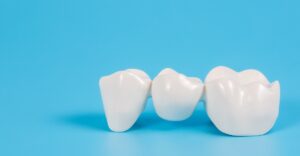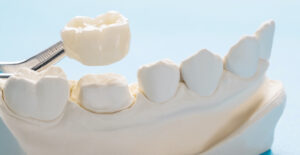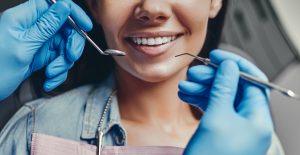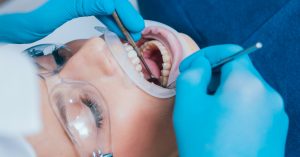Dental emergencies may include, but are not limited to, teeth that are knocked out (avulsed), forced out of position, loosened (extruded) or fractured, lost fillings, caps etc. In addition, lips, gums or cheeks are often cut. Oral injuries are often painful and should be treated by a dentist as soon as possible. Getting to a dentist with 30 minutes of the injury can make the difference between saving or losing a tooth.
Knocked Out Tooth
- Immediately call your dentist for an emergency appointment. Time is of the essence so make sure you get to the dental office as soon as possible.
- Handle the tooth by the crown, not the root. Touching the root (the part of the tooth below the gum) can damage cells necessary for attaching the tooth back into the mouth.
- Gently rinse the tooth in water to remove dirt. Do not scrub.
- Place the clean tooth in your mouth between the cheek and gum to keep it moist.
- If there is a danger of swallowing, transport it in milk or saline as it is important not to let the tooth dry out.
- Control bleeding and swelling with an ice pack.
Tooth Pushed Out of Position
Attempt to reposition the tooth to its normal alignment using very light finger pressure, but do not force the tooth. Bite down to keep the tooth from moving. The dentist may splint the tooth in place to the adjacent healthy teeth. If there is bleeding, bite down on a moist gauze piece until it stops.
Fractured Tooth
Immediately get to your dentist, who will determine treatment based on how badly the tooth is broken. Only a dentist can tell how bad the break is.
Minor fractures may be smoothed by your dentist or simply left alone. Another option is to restore the tooth with a composite restoration. In either case, treat the tooth with care for several days. Be sure not to bite with the injured tooth.
Moderate fractures may include damage to the enamel, dentin and/or pulp. Depending on the degree of damage, a root canal and a crown may be necessary.
Severe fractures, especially vertical ones, often mean a traumatized tooth with slim chance of recovery.
Tissue Injuries
Injuries to the inside of the mouth include tears, puncture wounds and lacerations to the cheek, lips or tongue, usually caused by falling on a sharp object. The wound should be rinsed immediately with warm water, and the bleeding controlled with firm pressure with a moistened gauze piece. If the bleeding continues, take the injured person taken to a hospital emergency room for the necessary care. Follow-up with your dentist and /or doctor for further treatment.
Dislodged Cap (Crown)
Make an appointment with your dentist as soon as possible to prevent any decay from developing in the area. If you suspect you may have swallowed the crown, go to a hospital ER immediately.
Lost Filling
Gently clean the area. If you can locate the cavity, place a small cotton pellet barely soaked in oil of cloves or eugenol into the cavity. The pellet should be dried as best as possible on a tissue before inserting into the cavity. Seek dental attention as soon as you can.
Dental Emergency Care Kit
It is always wise to be prepared for any emergencies. A dental first-aid kit is necessary to apply proper dental first aid. Items needed in the dental first aid kit or as part of a general first-aid kit are as follows:
- Dentist’s phone numbers (home and office)
- Cotton swabs – Helps stop bleeding; cleans injury.
- Tea bags – Stops bleeding by pressing a wet tea bag on bleeding injury (tannic acid in tea stops bleeding).
- Dental floss – Removes objects from between teeth.
- Toothpicks – Removes objects wedged between teeth.
- Sterile gauze – Cleans injury or used as compress.
- Tweezers – Removes objects between teeth.
- Dental wax – Stops irritation to cheeks or gums by placing the dental wax over a chipped tooth or a protruding wire from orthodontic bands.
- Ice pack – Helps reduce swelling of an injury.
- Handkerchief – Immobilizes broken jaw.
- Small container with lid to transport tooth or tooth fragments in
- Saline Solution
- Mild painkillers







